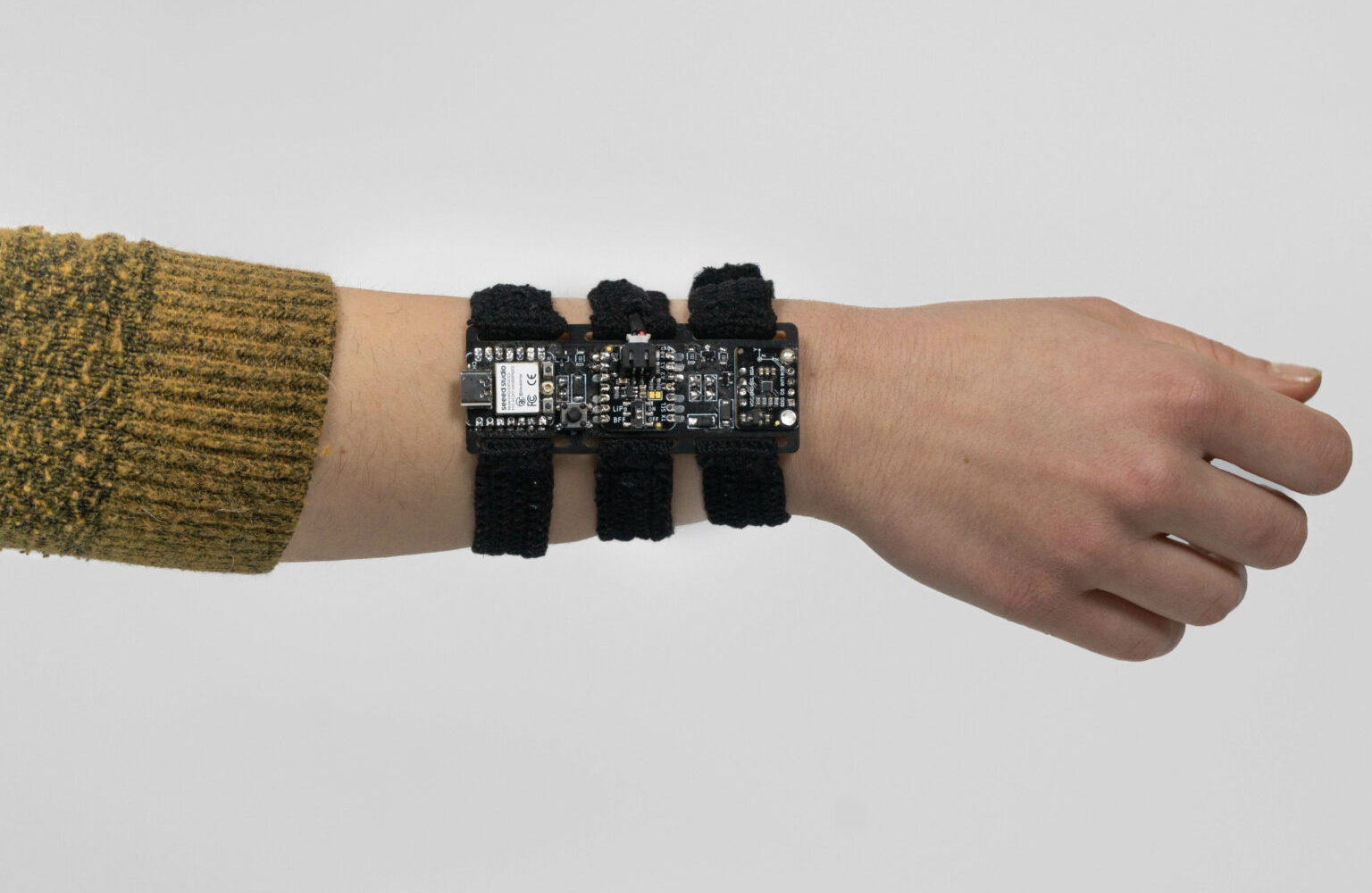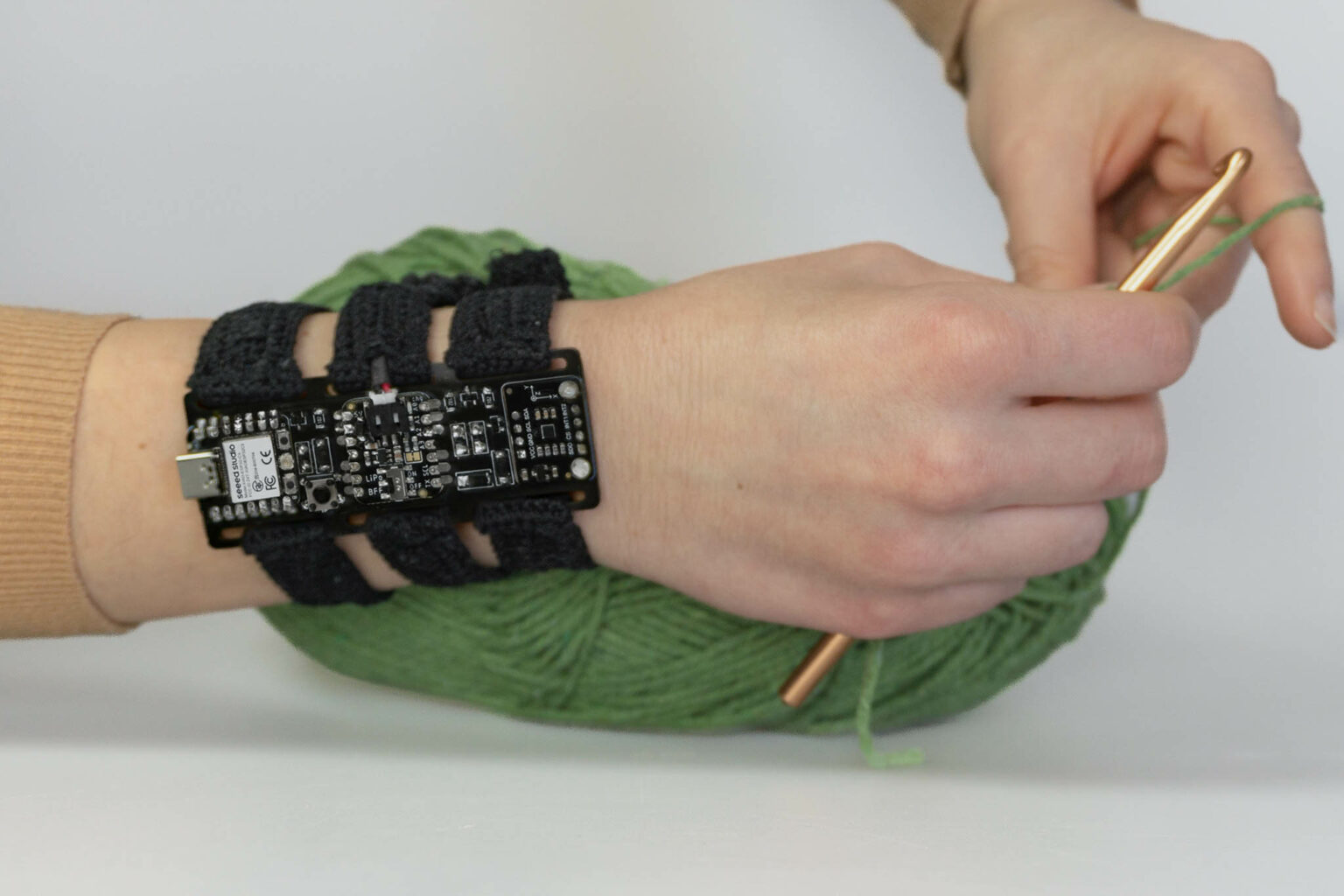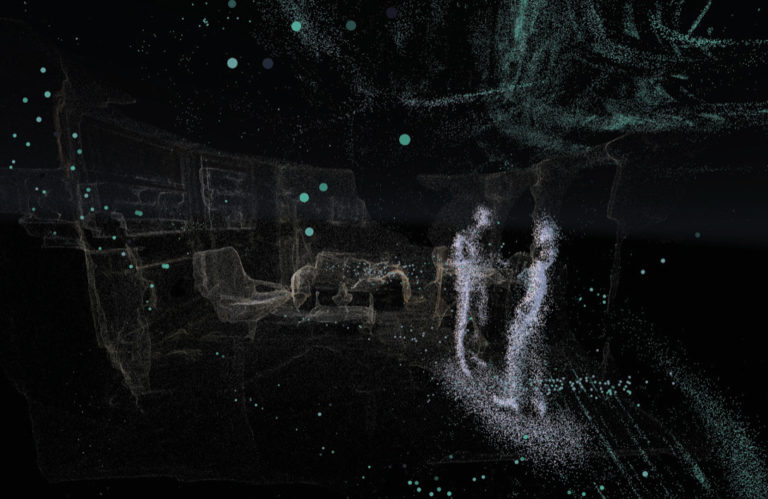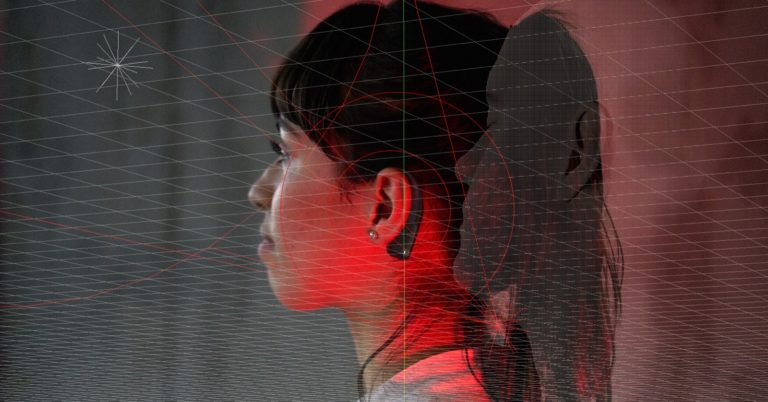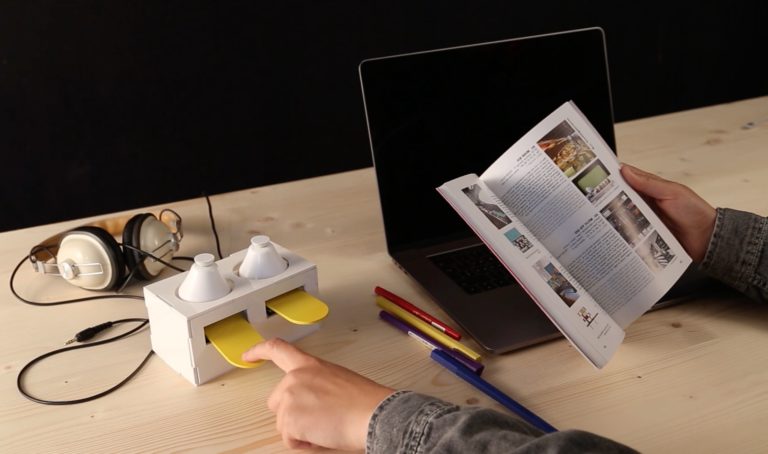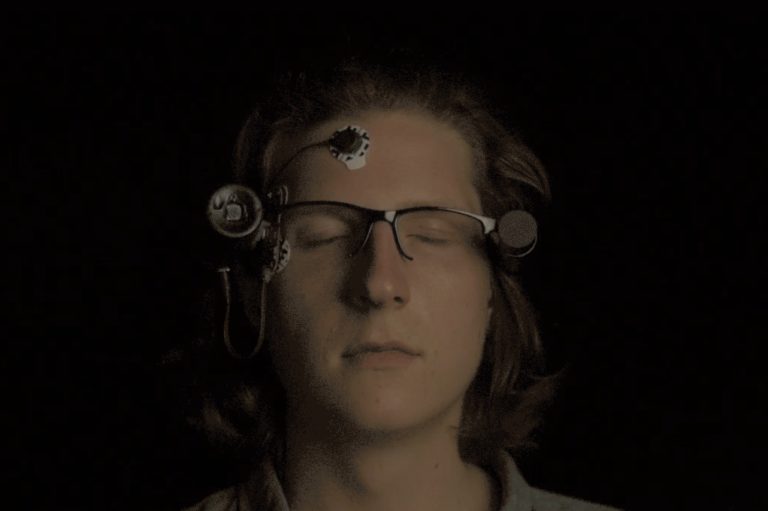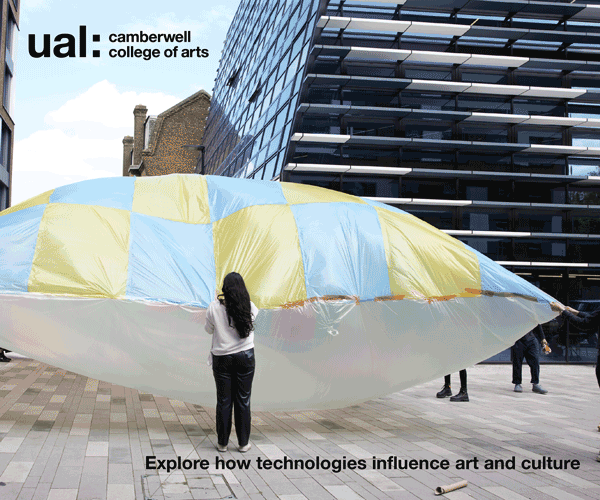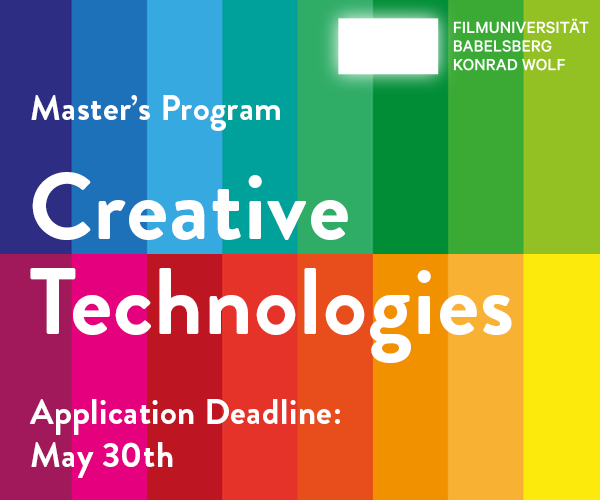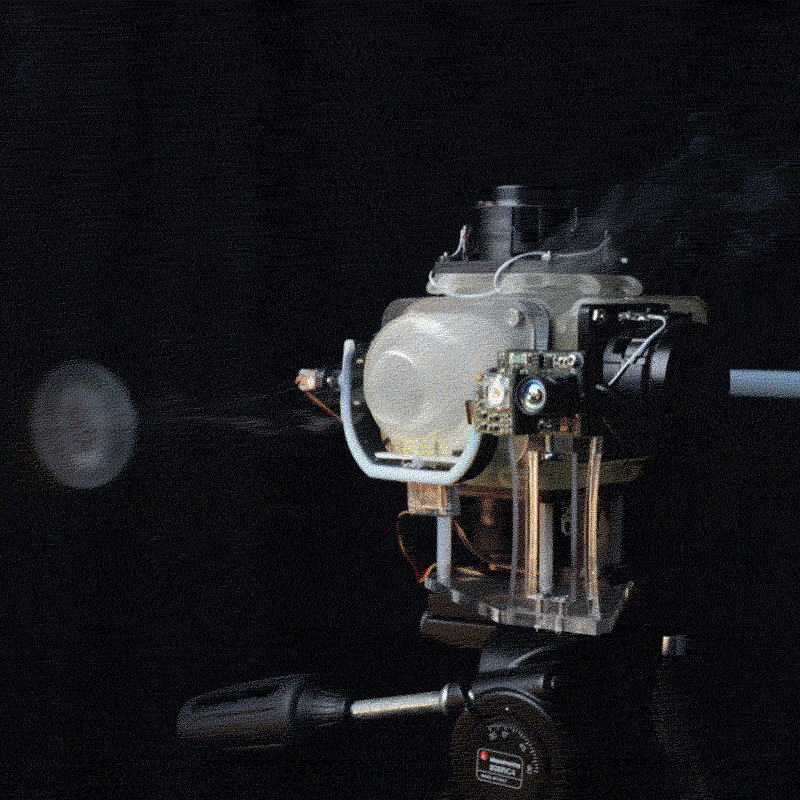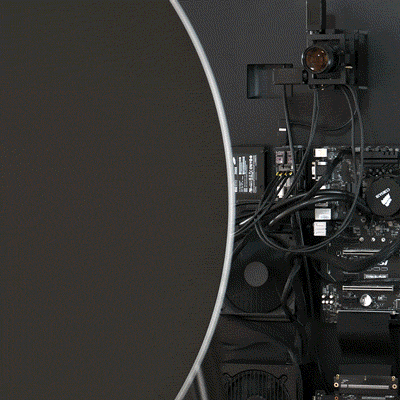Created by Julia Vollmer at HFK Bremen (Digital Media: Program for Technology, Theory, and Design), The Crochet Protocol consists of a wearable bracelet with an ESP32 and three vibration motors used to present generated instructions.
Starting with the question, “What would it be like when a device is telling the wearer what to do?” Julia combined two very different personal interests: Crocheting + Coding. Despite the not-quite-obvious connection, crocheting seems to embed features similar to coding, although amongst the crocheting communities, it is widely agreed that crocheting cannot be easily replicated by a machine as “there is no similar mechanism for making the transverse chains that are another definitive attribute of hand crochet. Therefore, a machine that can produce true crocheted fabric remains to be devised.” (see Cary Karp). Therefore, crocheting lends itself perfectly to the scenario of a machine in need of human labour. This project explores the interaction between crocheting, the code, the wearer and the controls through the machines.
What does it take for the wearer to learn and understand the instructions given through the wearable device? What are the power dynamics? And what is the sensory feeling and the implications of the bracelet?
Julia Vollmer
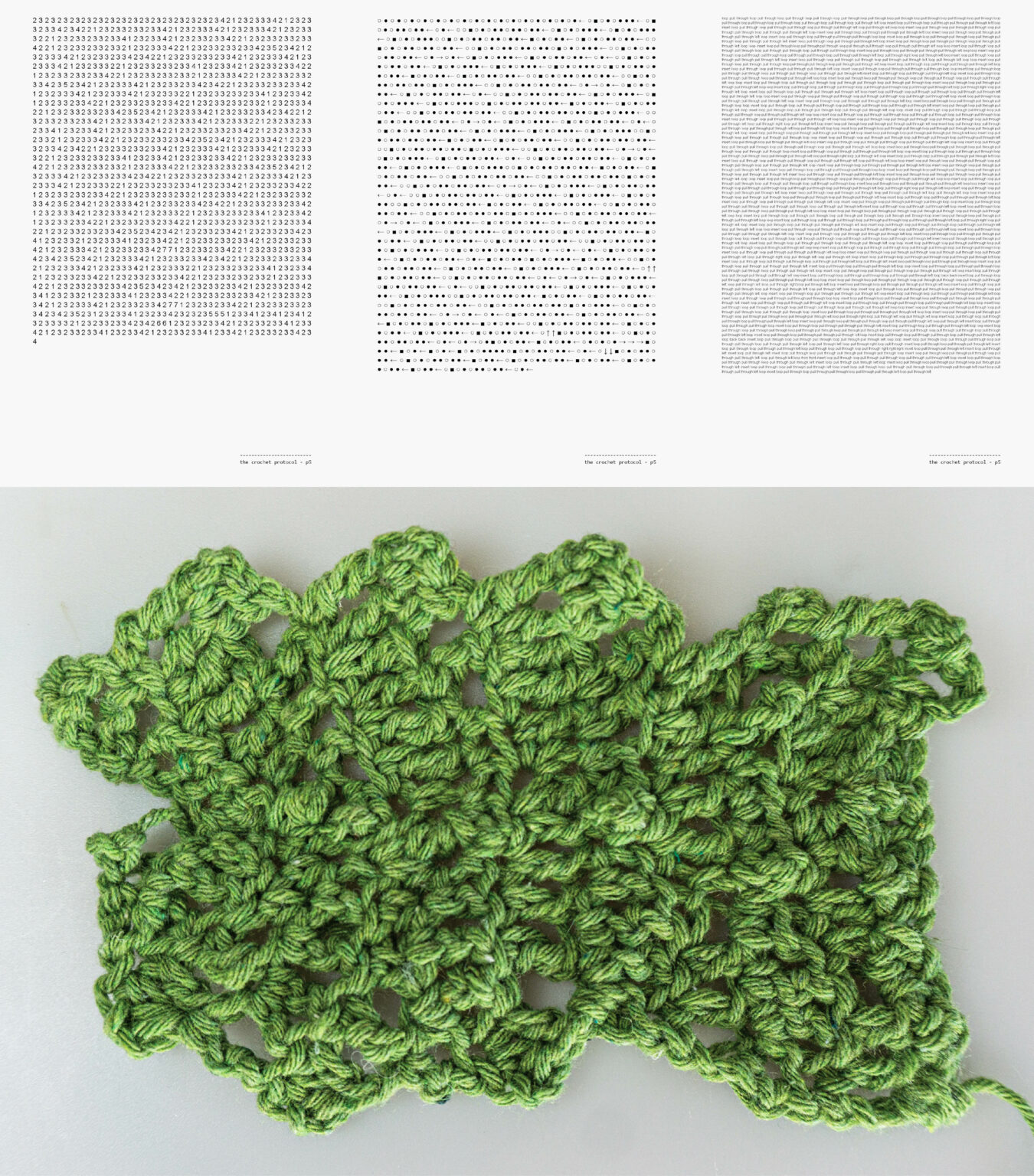
The wearer is told the next instruction through vibration signals, and it is their job to interpret these signals and follow the loops and decisions of the device. The motor vibrations can only be felt by the wearer, who has to follow the protocol and accustom themselves to the new sensory feeling.
The instructions for crocheting are created by the device itself. A protocol consisting of seven steps has been developed to break down the steps and stitches within crocheting. These steps are interpreted in various ways within the system. On a higher level, these signals represent the typical steps that underlie every stitch: insert, loop, pull through, left, right, front, and back. The steps are visually represented through words, numbers and symbols. Looking at these steps as numbers, the device transforms them again into the vibration signals using the three motors.
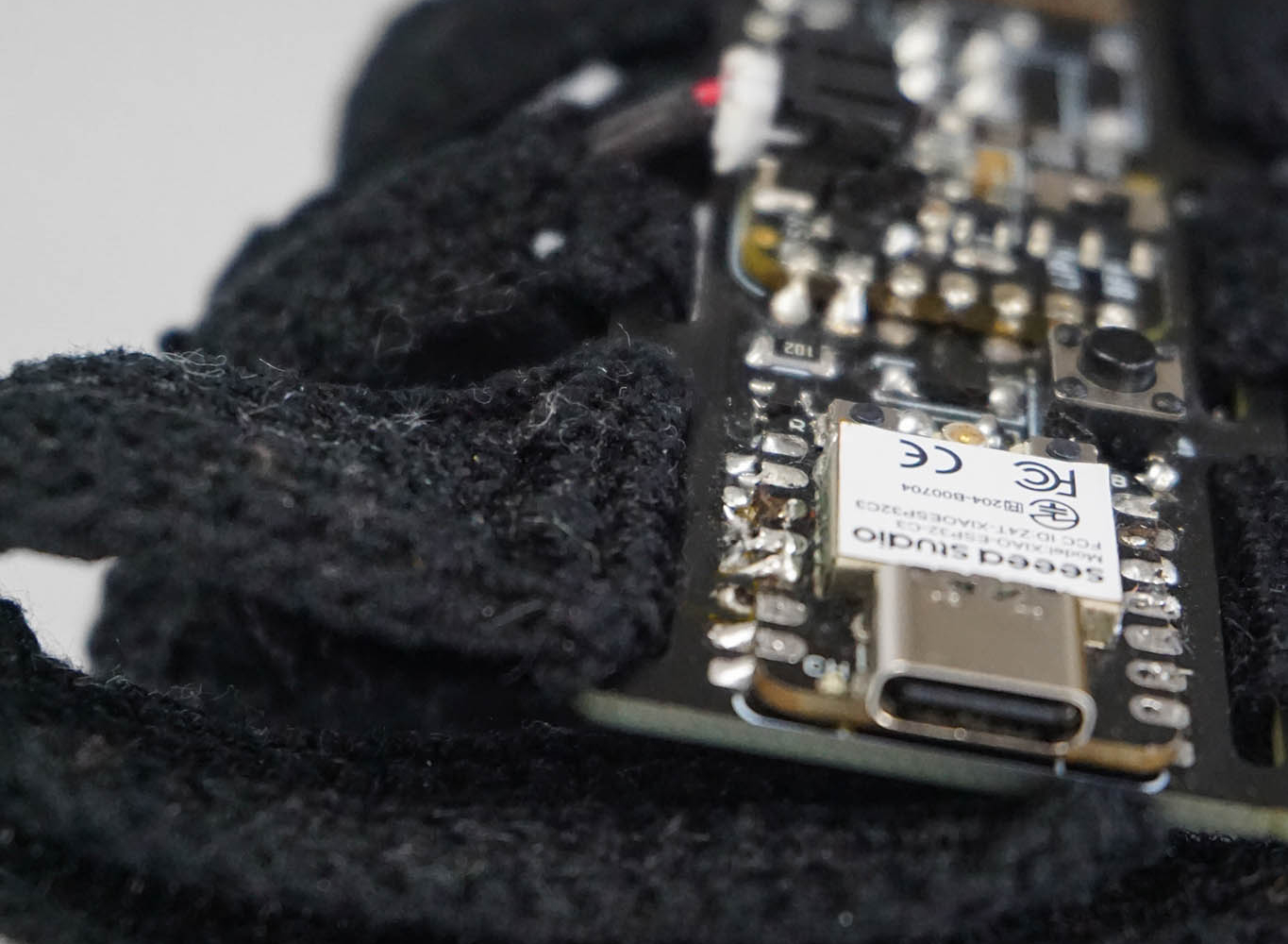
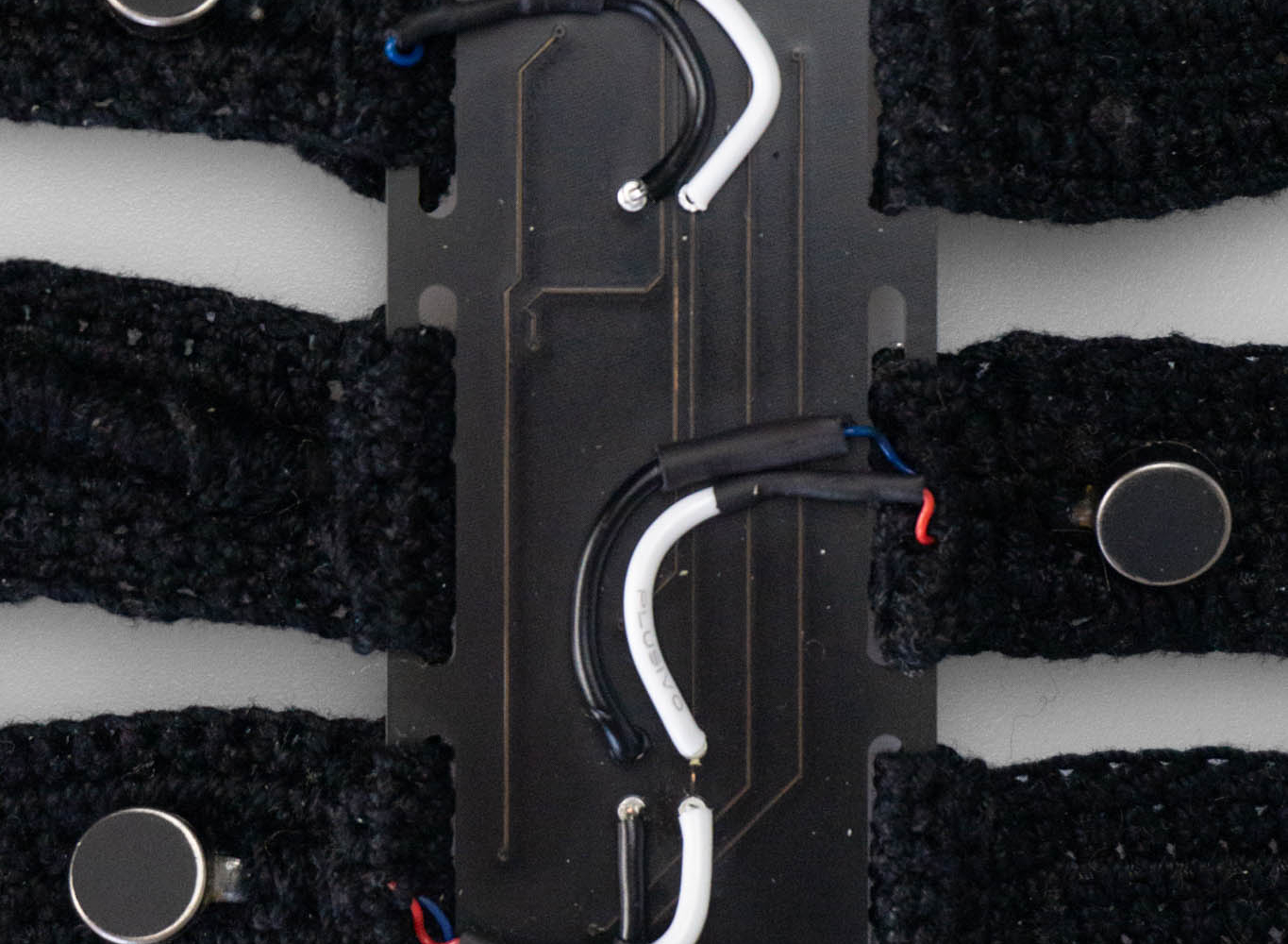
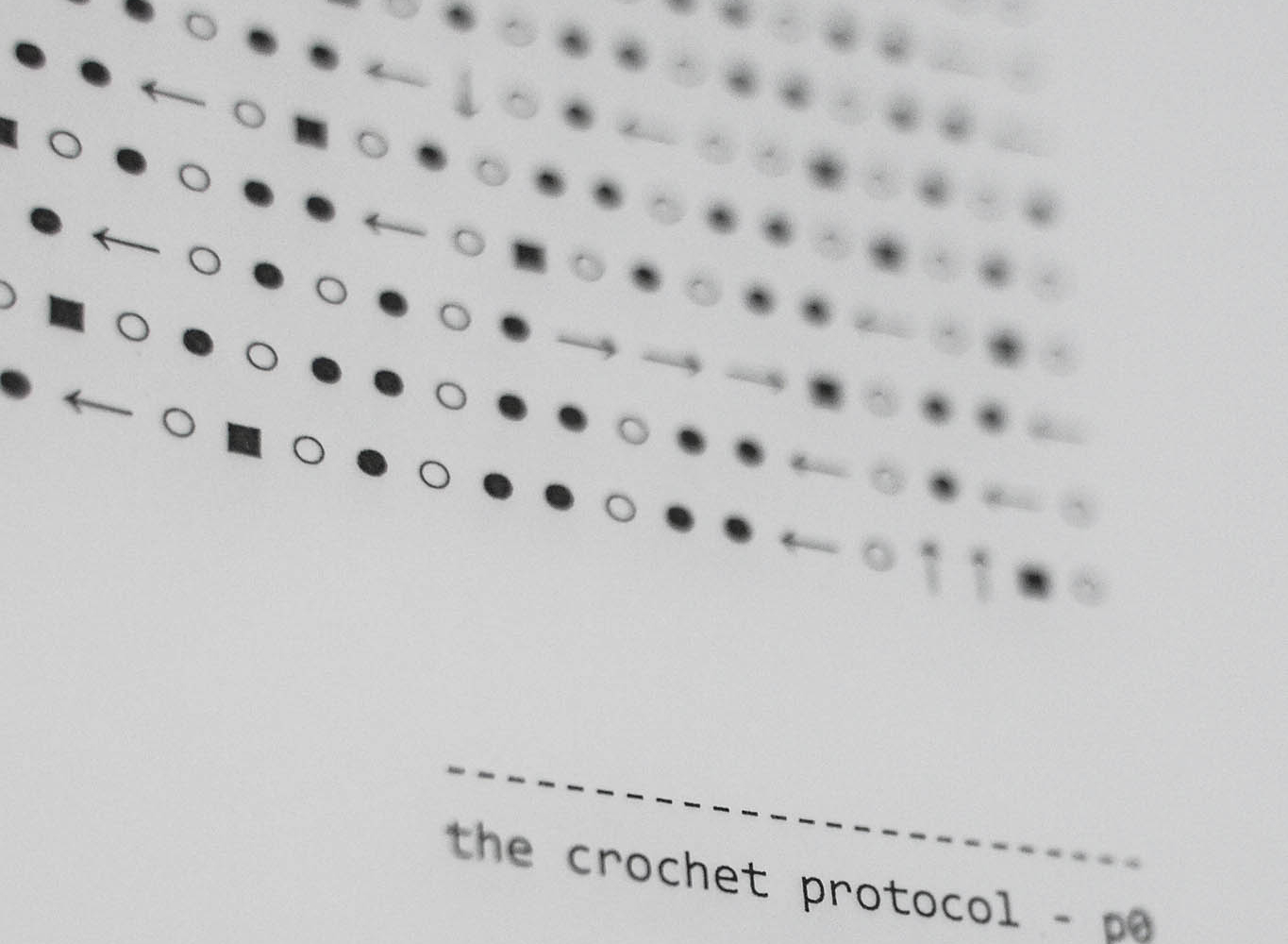
The bracelet consists of a custom printed circuit board featuring an ESP32 with WiFi, an accelerometer, a power management system, three coin vibration motors, switches and a small compact Li-Po battery. To secure the motors in place and guarantee close contact with the arm of the wearer, the bracelet is secured with three crocheted bands that allow individual adjustment for each of the motors for various arm sizes. Additionally, the battery is discreetly woven into one of the bands. At first, the signals seem hard to distinguish, but through prolonged usage, the body adapts to the bracelet and gets a new sense of the vibrations. While following the device’s instructions, the wearer experiences predictable patterns and unusual happenings that require them to make their own decisions.
More information and code samples can be found in the Algorithmic Pattern Salon 2023 publication.
Project Page | Julia Vollmer
